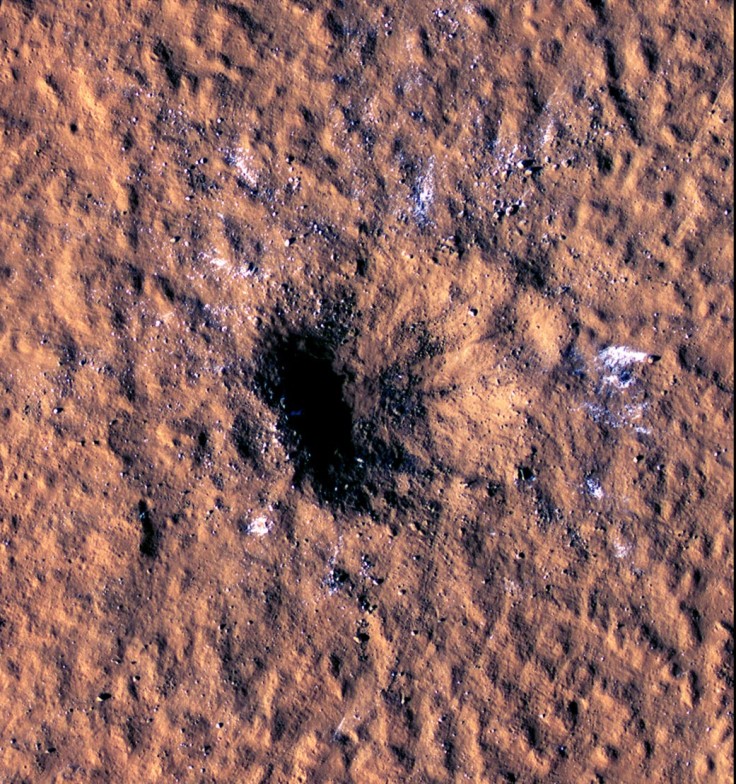NASA's Mars InSight Lander may have successfully cemented its final accomplishment before it shuts down.
The space agency's doomed lander recently found the crater of a meteoroid strike that caused the marsquake it detected in mid-December 2021.
NASA's Mars InSight lander only has six weeks left to "live" before it permanently shuts down due to the Martian dust it had accumulated since it landed on the Red Planet on Nov. 6, 2018, per NASA.
Martian Meteoroid Strike Crater Details
According to a NASA report on the meteoroid impact, InSight detected the magnitude four marsquake the meteoroid made on impact with Mars' surface on Dec. 24, 2021. At that time, however, experts didn't know what caused the marsquake to occur.
It was only on Feb. 11 that experts at Malin Space Science Systems (MSSS), with the aid of NASA's Mars Reconnaissance Orbiter, found the crater in question.

The meteoroid that crashed into Mars on Dec. 24 is thought to be 16 to 39 feet big based on the crater it left. According to experts, it is small enough to burn up in Earth's atmosphere but not in Mars' thin atmosphere.
The crater it left measures roughly 492 feet across and 70 feet deep, sending ejecta away from the impact site as far as 23 miles away.
For those unaware, ejecta are the materials that were forced or thrown out following a meteoritic impact, volcanic eruption, or celestial explosion, per the Merriam-Webster Dictionary.
With the magnitude and size of the crater, scientists now believe that it is now one of the largest craters ever witnessed forming in any place in the solar system.
Ingrid Daubar of Brown University and the leader of InSight's Impact Science Working Group said that the impact is "an exciting moment in geologic history," and that finding a fresh impact of its size is unprecedented.
However, despite its noteworthiness, the objects that it revealed from underneath Mars' surface are what caught scientists' attention the most.
The crater unearthed boulder-size chunks of ice buried underneath the Red Planet's surface within its Amazonis Planitia region, a zone closer to its equator than ever found before.
This discovery made NASA believe it could lead to the arrival of the first astronauts on Mars in the distant future.
Liliya Psiolova, the leader of the Orbital Science and Operations Group at MSSS, said that the crater's size, the ice it exposed, and the blast zone that was preserved in the Red Planet's dust was unlike any they have seen before.
"I couldn't help but imagine what it must have been like to witness the impact, the atmospheric blast, and debris ejected miles downrange," Posiolova said.
NASA InSight Lander - A Doomed Spacecraft
NASA's InSight Lander is on its last legs. The space agency launched InSight on May 5, 2018, at the Vandenberg Air Force Base in California aboard an Atlas V-401 rocket and landed on Mars' Elysium Planitia on Nov. 26, 2018.
Since then, it was able to detect 1,313 marsquakes, with one of the latest marsquakes measured being the biggest ever detected outside Earth.
However, InSight's solar panels had accumulated large amounts of Martian Dust since its arrival on the Red Planet. With the amount of dust on them, NASA believes that InSight only has enough power to keep it running for six more weeks before it shuts down permanently.
Related Article : NASA's Lucy Spacecraft Snaps Photo of Earth in a Distance









